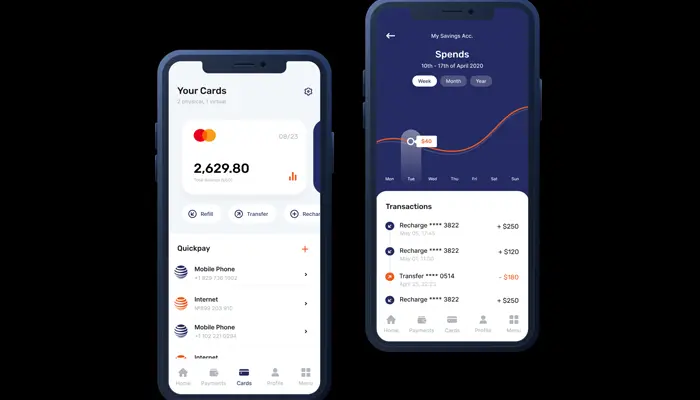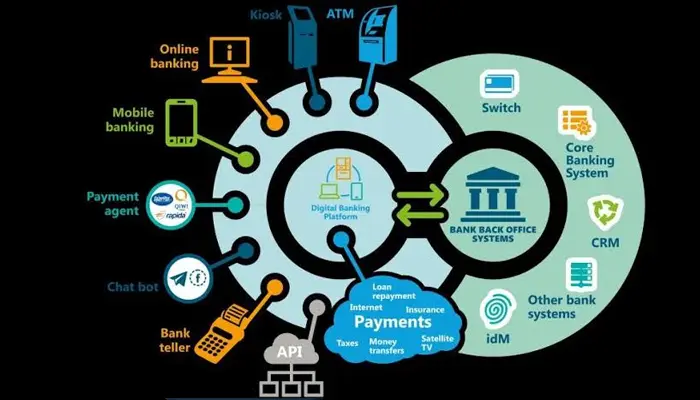₹3 Lakh Crore Profit Surge: How Tech Innovations Transformed India's Banking Sector
- Admin
- 1 year ago
- 4 minutes read

India's banking sector has reached an unprecedented net profit of ₹3 lakh crore for the first time in the financial year 2024. The combined net profit of listed public and private sector banks increased by 39%, rising to ₹3.1 lakh crore from ₹2.2 lakh crore in FY23. On Monday, Prime Minister Narendra Modi stated that this achievement will enhance credit accessibility for the poor, farmers, and MSMEs.
The banking sector is undergoing a significant transformation, driven by technological advancements that have revolutionized operations and customer experiences. From fintech solutions and digital banking platforms to AI-driven services, these innovations have contributed to the sector's profitability and efficiency. This article explores the key technological trends reshaping banking and their impact on the industry.
Fintech Solutions: Bridging Gaps and Expanding Access
Fintech, short for financial technology, has been a game-changer for the banking sector. By leveraging technology, fintech companies have developed innovative products and services that cater to the evolving needs of consumers and businesses. These solutions include mobile payments, peer-to-peer lending, and digital wallets, which have made financial services more accessible and convenient.

One significant fintech advancement is the rise of mobile banking apps. Banks like HDFC and ICICI in India have introduced comprehensive mobile apps that allow customers to perform a wide range of banking activities from their smartphones. These apps offer features such as instant fund transfers, bill payments, and loan applications, eliminating the need for physical branch visits and enhancing customer convenience.
Digital Banking Platforms: The Shift to Online Services
Digital banking platforms have emerged as a cornerstone of modern banking. These platforms enable banks to offer a full suite of services online, from account opening and management to investment and advisory services. The shift to digital banking has been accelerated by the COVID-19 pandemic, which necessitated remote access to financial services.

Banks like Axis Bank and SBI have invested heavily in digital platforms, offering customers a seamless online banking experience. These platforms utilize robust security measures, including biometric authentication and encryption, to protect user data and transactions. Additionally, digital banking has reduced operational costs for banks by automating routine tasks and minimizing the need for physical infrastructure.
AI-Driven Services: Enhancing Efficiency and Personalization
Artificial intelligence (AI) has become integral to banking operations, driving efficiency and personalization. AI-powered chatbots and virtual assistants are now commonplace in customer service, handling queries and providing support around the clock. For instance, ICICI Bank's AI-based chatbot, iPal, assists customers with various banking services, improving response times and customer satisfaction.

AI also plays a crucial role in risk management and fraud detection. Machine learning algorithms analyze vast amounts of transaction data to identify patterns and anomalies that may indicate fraudulent activity. This proactive approach allows banks to mitigate risks and protect customer assets more effectively.
Moreover, AI enhances personalization in banking. By analyzing customer data, AI systems can offer tailored financial products and advice. For example, HDFC Bank uses AI to provide personalized investment recommendations based on individual risk profiles and financial goals, helping customers make informed decisions.
Blockchain Technology: Securing Transactions and Streamlining Processes
Blockchain technology is making inroads into the banking sector, promising enhanced security and transparency. Blockchain's decentralized ledger system ensures that all transactions are recorded immutably and transparently, reducing the risk of fraud and enhancing trust.

Banks are exploring blockchain for various applications, including cross-border payments, trade finance, and KYC (Know Your Customer) processes. For instance, the State Bank of India (SBI) is part of a consortium exploring blockchain solutions to streamline trade finance, making transactions faster and more secure.
The Impact on Profitability and Future Outlook
The adoption of these technological innovations has significantly contributed to the banking sector's profitability. By improving operational efficiency, reducing costs, and enhancing customer experiences, banks have been able to drive growth and increase revenues. For example, the integration of AI and digital banking has reduced the need for physical branches, cutting down overhead costs and increasing margins.
Looking ahead, the banking sector is poised for further technological advancements. The continued evolution of AI, blockchain, and fintech solutions will likely bring new opportunities and challenges. Banks must remain agile and adaptive, embracing innovation to stay competitive and meet the changing demands of their customers.
Technological advancements have reshaped the banking sector, driving profitability and transforming customer experiences. The adoption of fintech solutions, digital banking platforms, and AI-driven services has optimized banking operations, making financial services more accessible, efficient, and personalized. As technology continues to evolve, the banking sector must navigate these changes to sustain growth and remain at the forefront of innovation.












